Assignment 4: Bio Dyes & Bio Fabrics
“The textile industry is one of the most polluting in the world, in which one of the most environmentally disastrous processes is the dyeing of fibers and textiles of the clothes we wear. Chemicals are released daily in rivers and nature destroying the environment around us to satisfy the color demands that we create as designers, industry and consumers. Very few options are being explored in this fast-changing fashion, clothing and textile industry, and the list of chemicals treatments is only expanding.” - Cecilia Raspanti
Explore at least :
- 1 natural dye or bacterial dye
- crafted or grown material
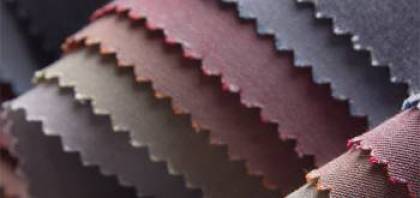
Initially I have been used beetroot for both, animal fibers and vegetable fibers. In the following it will be shown how I proceeded to fulfill the task of this assignment. In total, 8 animal fibers and 8 vegetable fibers have been prepared. 4 of each category are dyes with mordant and the rest 4 without mordant.
- Animal fiber: Alpaca
- Vegetable fiber: Linen
The first step was to cut the material (Alpaca and Linen), afterwards I weighted each piece. Here I was trying more or less that the pieces of the respective group had almost the same weight.
Subsequently, we boiled the vegetable fibers with two spoons of backing soda for 60 minutes. Whereby the animal fibers resting for a spell- to be more accurate for also 60 minutes in water at room temperature. After the received boiled time we flushed it out with cold water.
Due to the fact that we were allowed to work within a group, Gerantina Hoxha and me used beetroot therefore we worked together. 300 g of fresh beetroot was peeled and chopped into small pieces, added water and stated to boil with very low temperature in tow different bowls.
- One for the vegetable fibers
- One for the animal fibers
It took roughly 30 minutes for starting boiling the water. After that I added 4 of the vegetable fibers ( Linen) in one bowl and 4 of animal fibers (Alpaca) in the other one. We boiled the vegetable fibers for 30 minutes more in the solution with a very low temperature then left them both to sit in the solution over night.
The rest 8 fibers we calculated the quantity of mordant according to their weight and put them in hot water with the mordant. As mordant we used Tartaric Acid. Afterwards, created the solution and let them sit over the night as the same we did before. Aa a result, the fibers take the color and I was really surprised about the colors because my I expected it turns to be more in the red direction. However, it has been gone more or less in the yellow direction.
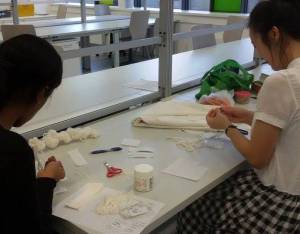

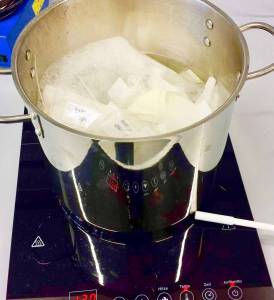
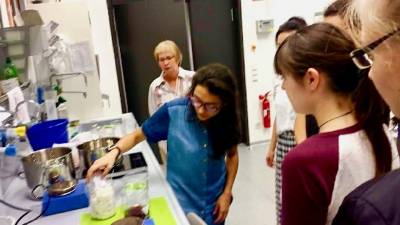
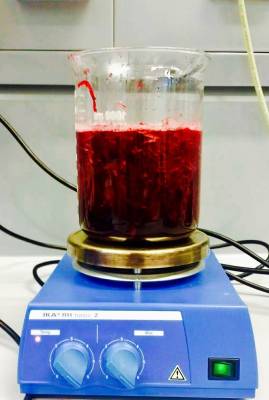
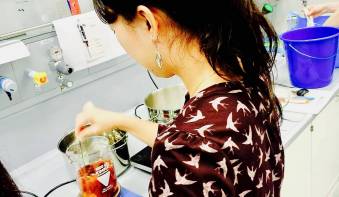
The modifying process - Friday, 20.10.2017
We decided to use the modifiers- vinegar, copper and alum. The fibers were boiled in the modifying solutions, as below:
Vinegar - boiled fibers in vinegar solution for 10 minutes
Copper- boiled fibers in copper solution for 20 minutes
Alum - boiled fibers in alum solutions for 10 minutes
The animal and vegetable fibers were done separately as they needed to be boiled at different temperatures ( animal needs a lower temperature). After boiling, the fibers were set out to dry overnight.
Initially Liane, Wei, Geri and me started with modifying the (mordant) vegetable fibers. Even we worked as a group each of us got their own task. Wei was responsible for weighting the modifier, water. Liane and me mixed each ingredients with the vegetables fibers step by step. Whereas Geri was managed the time of cooking. All of us were responsible for the documentation.
The first modifier was vinegar. We weighted the amount of vinegar (21g). we put one vegetable fiber from each into the vinegar and in addition poured 180 g of water. Afterwards we changed the solution from a bowl into a pot. We started to cook it at 18:57 until 19:07 under the temperature 4°C. However the temperature was too high therefore we lowered the temp. to 3°C.
In-between we prepared the solution with copper. 20g of copper was used and 200 g water. Here we put 20 g more than before. First, the water evaporated because we used 100 g . Afterwards we added 100 g of water. Due to the fact that we used a portable cooker the temperature differs from an ordinary cooker. Therefore the temperature amounted 1,5°C. We started at 19:00 until 19:20.
At least we started with the solution with Alum. On the basis of the rules hot water is needed. So we warmed the water with a water boiler. When we weighted the amount of water (180 g), we put towel below the pot due to security forces. Following which we added the vegetables fibers and mixed these with 8g of Alum.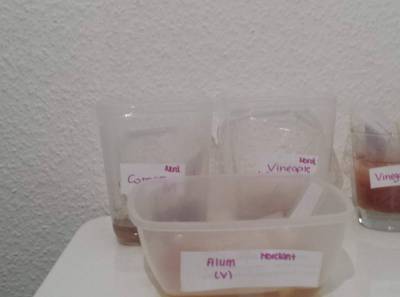


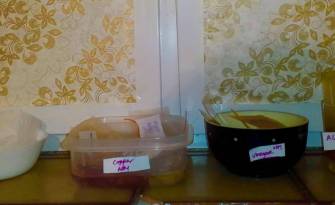
The results
How to view the results display:
- The display is separated into animal fibers and vegetable fibers, then no modifiers and modifiers
- The left-hand side with black tags in the animal and the fiber columns are fabrics with mordant, and on the right-hand side with blue tags are without mordant.
- The 3 modifiers from the top tp bottom ate vinegar,alum and copper
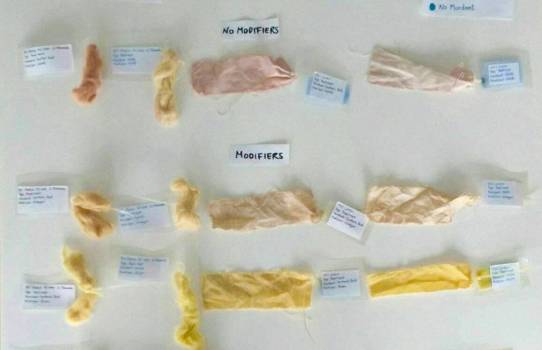
Biopolymer
Ingredients: 1 L of milk
1 litre of milk is brought to boiling point
4 splashes of vinegar are added after boiling
Silicon spray is put in the plastic petri dishes (this allows for no stick)
For colorants: turmeric (1:1 ratio with water), 2g of glycerol were added in a full petri dish, 12 g of paprika (in 15ml of water), and completely covered onion skin
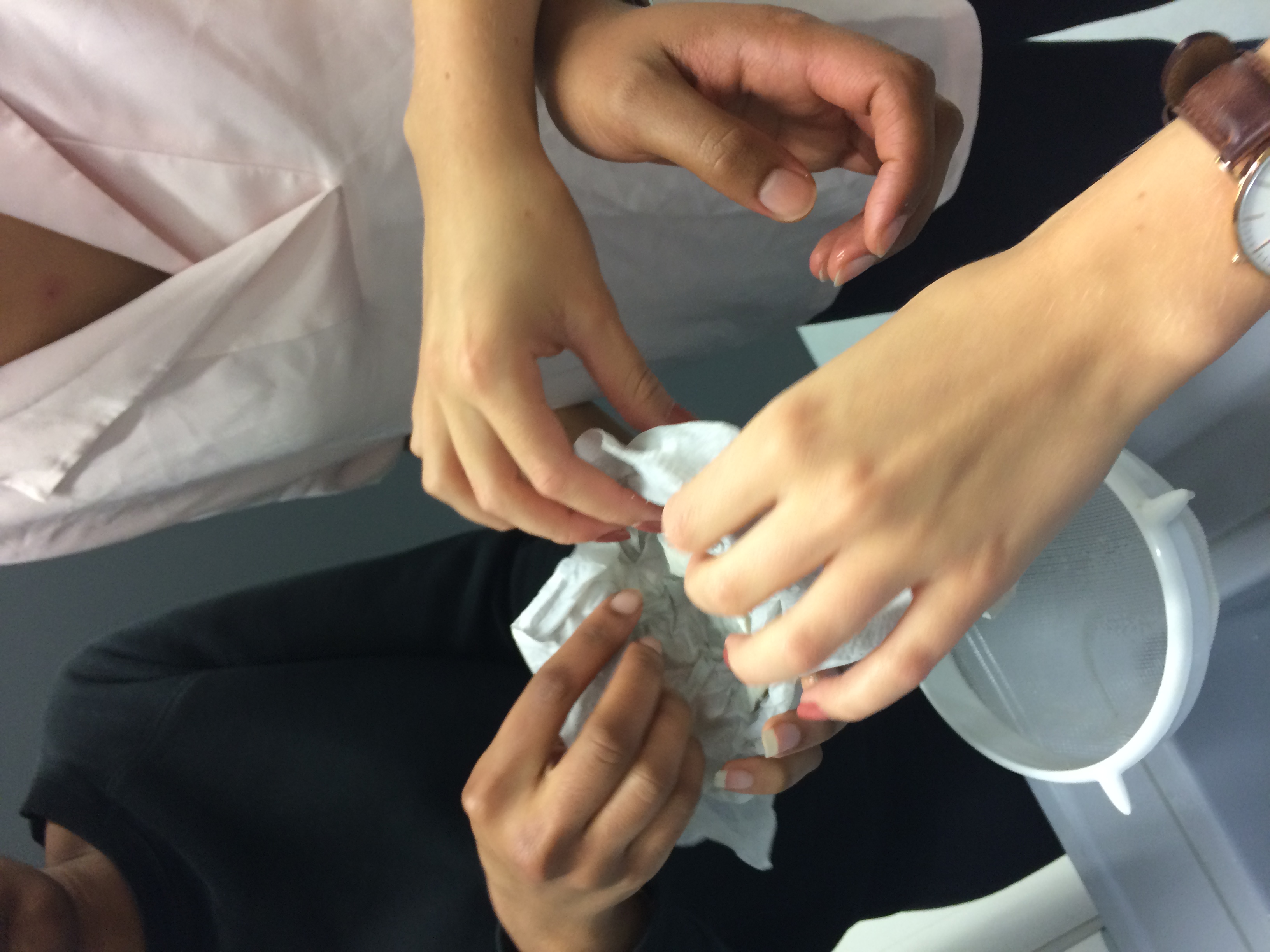
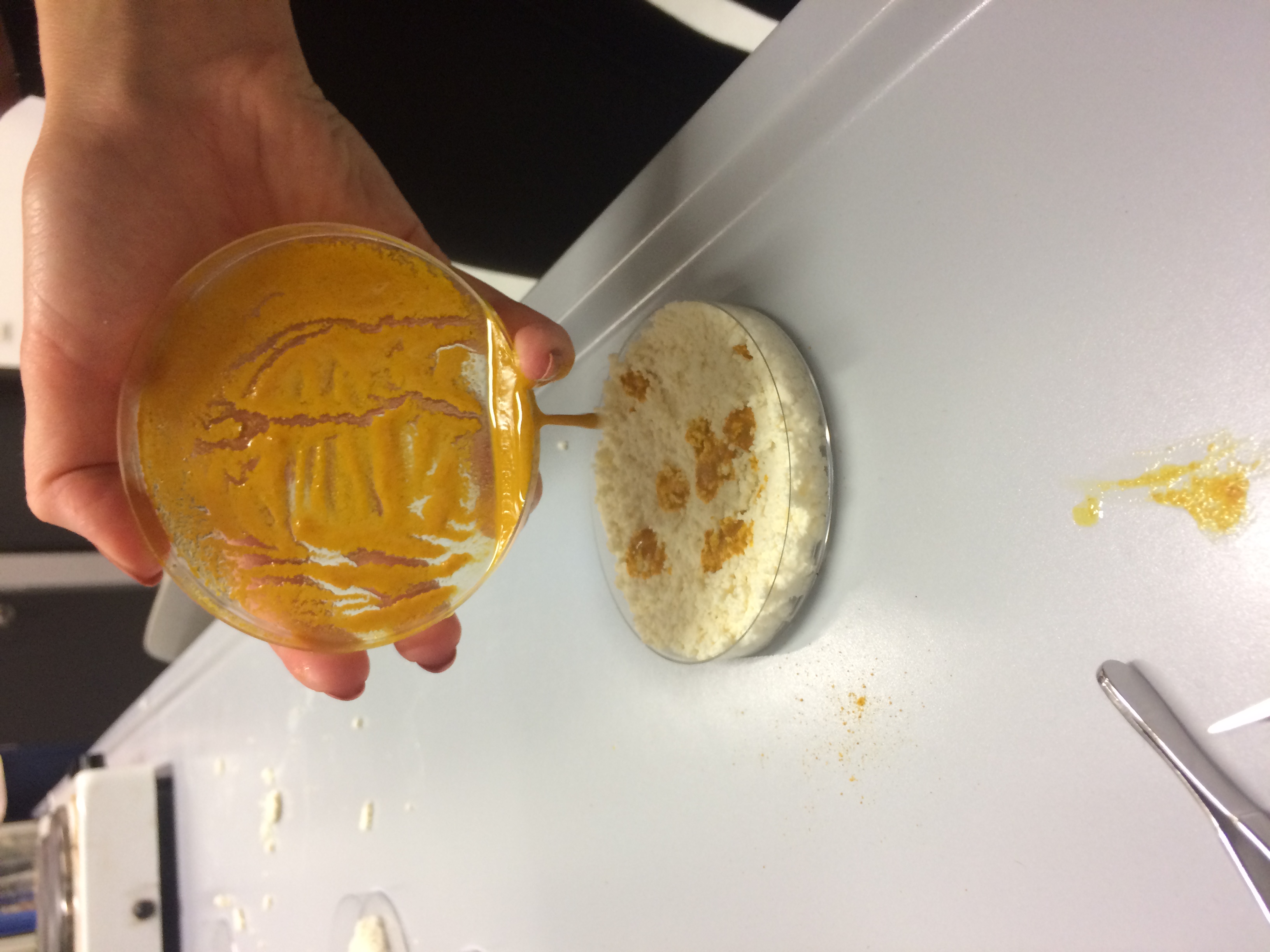
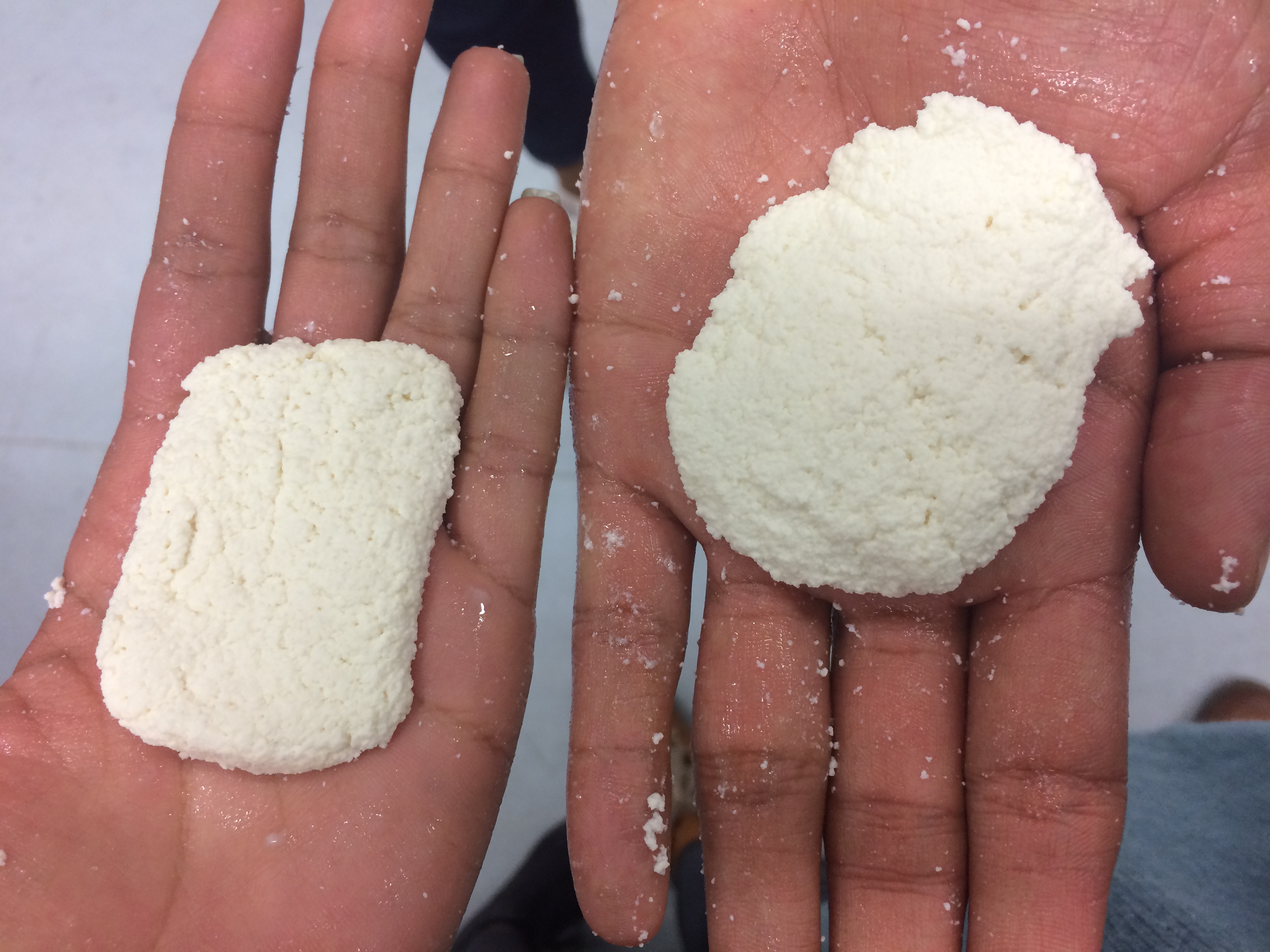
Results for Biopolymer
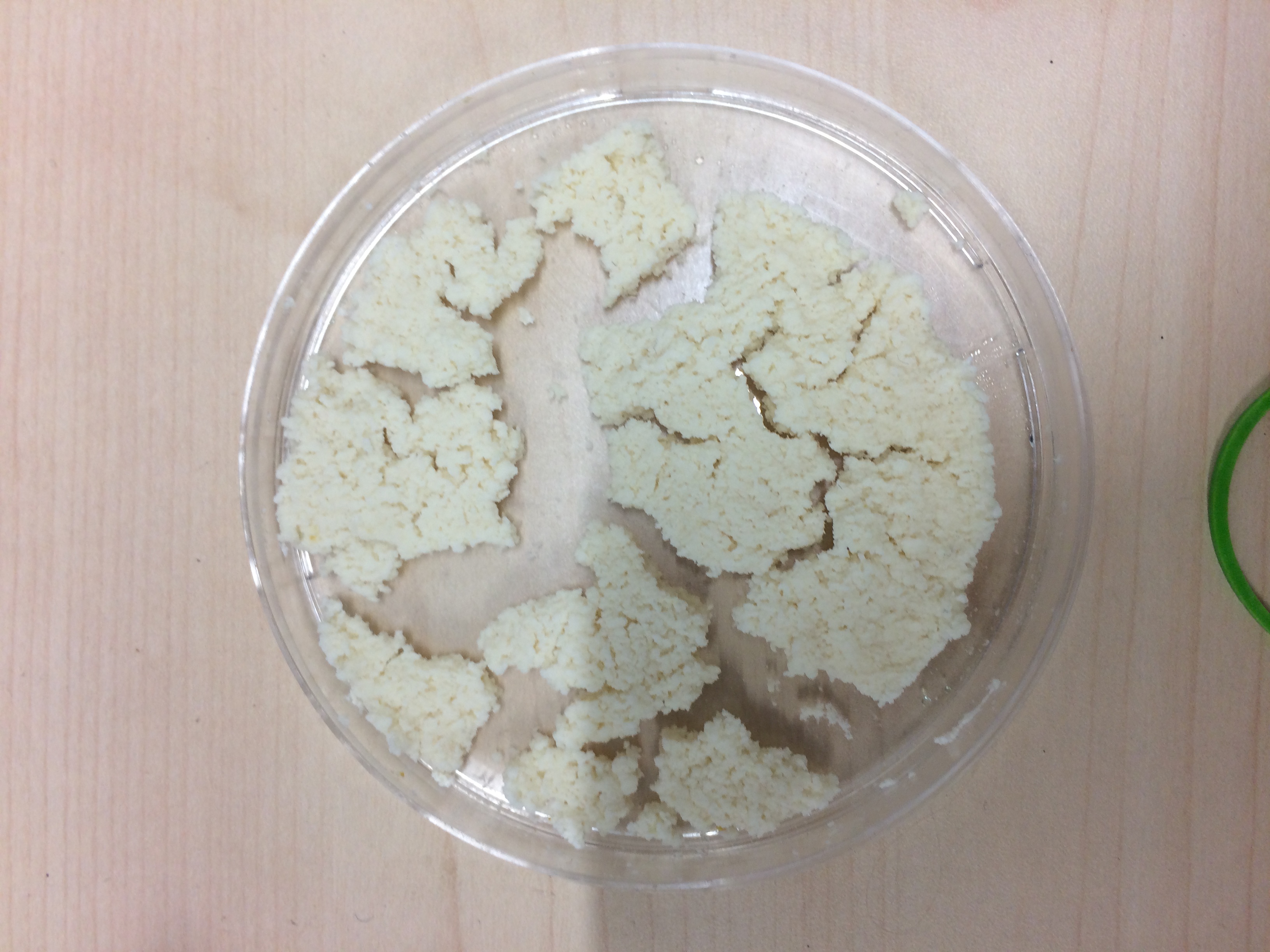
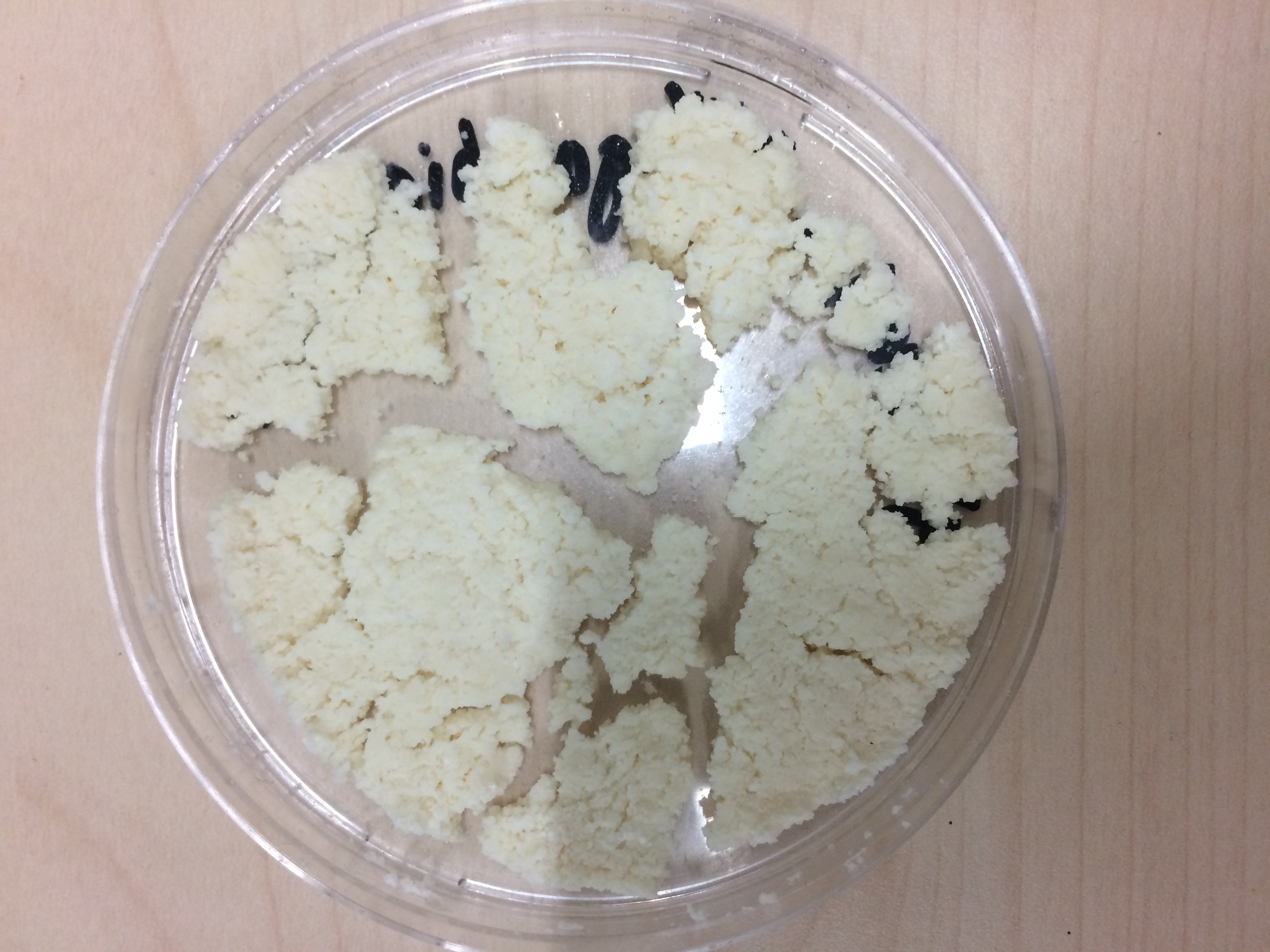
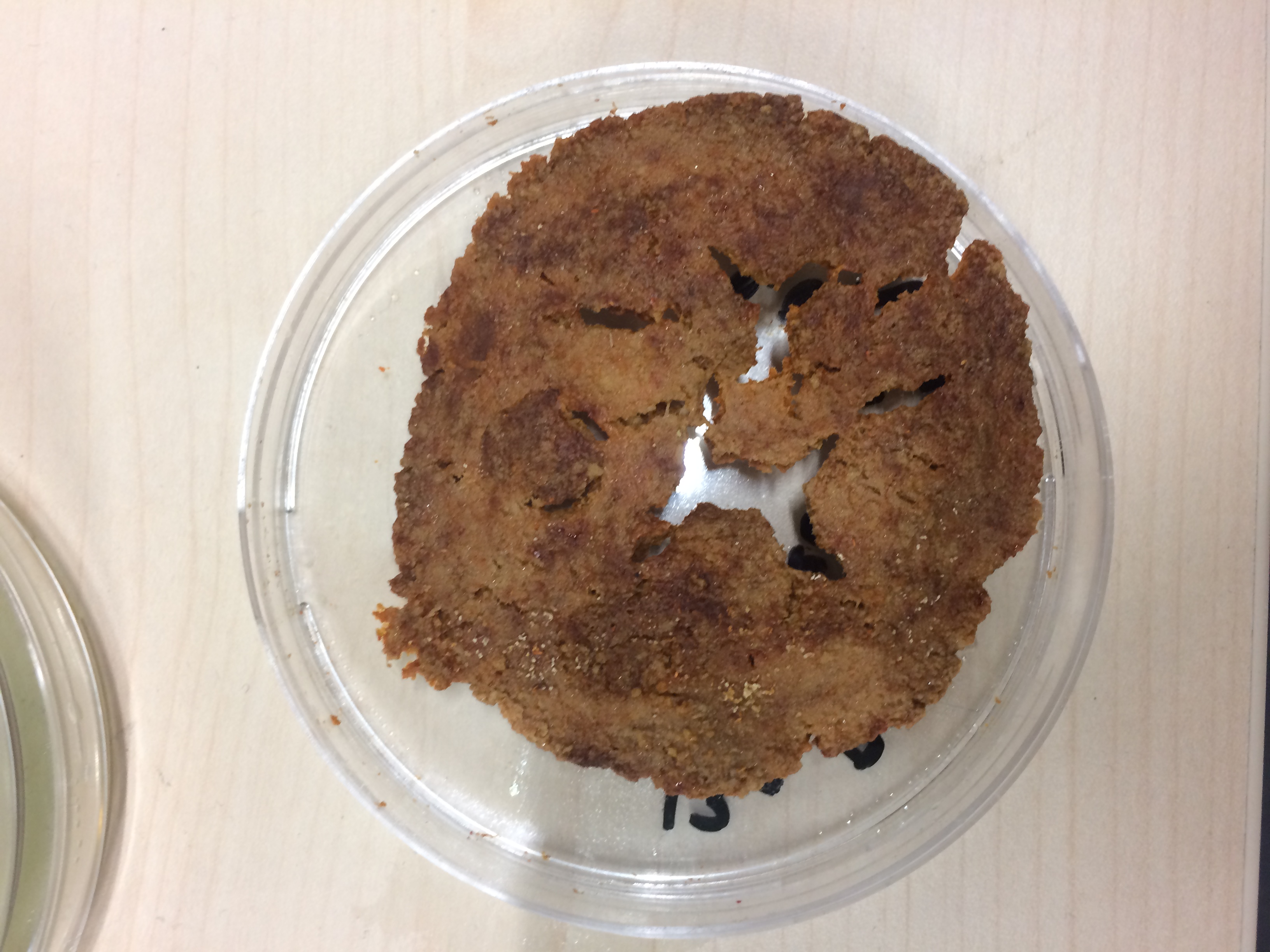
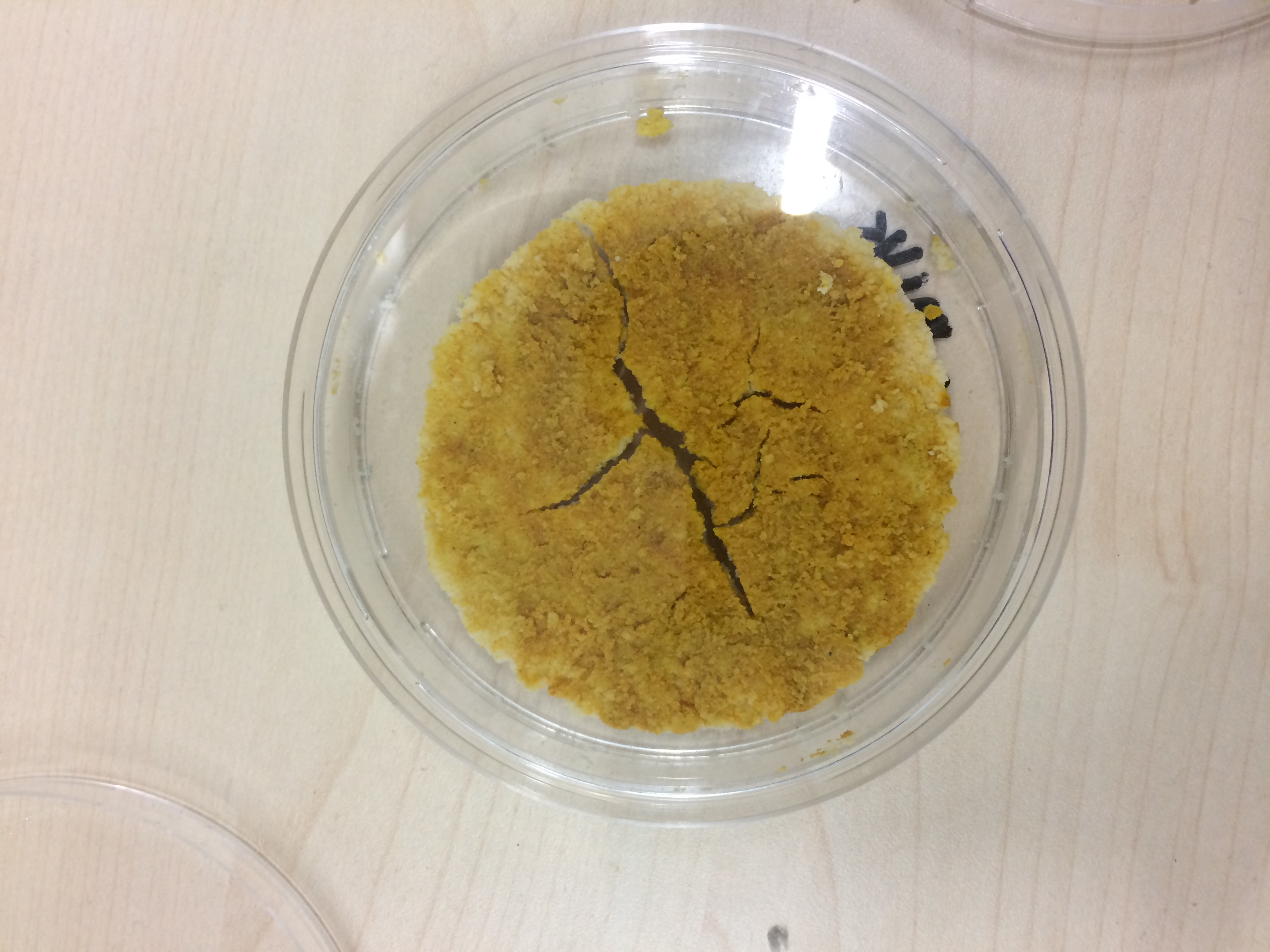
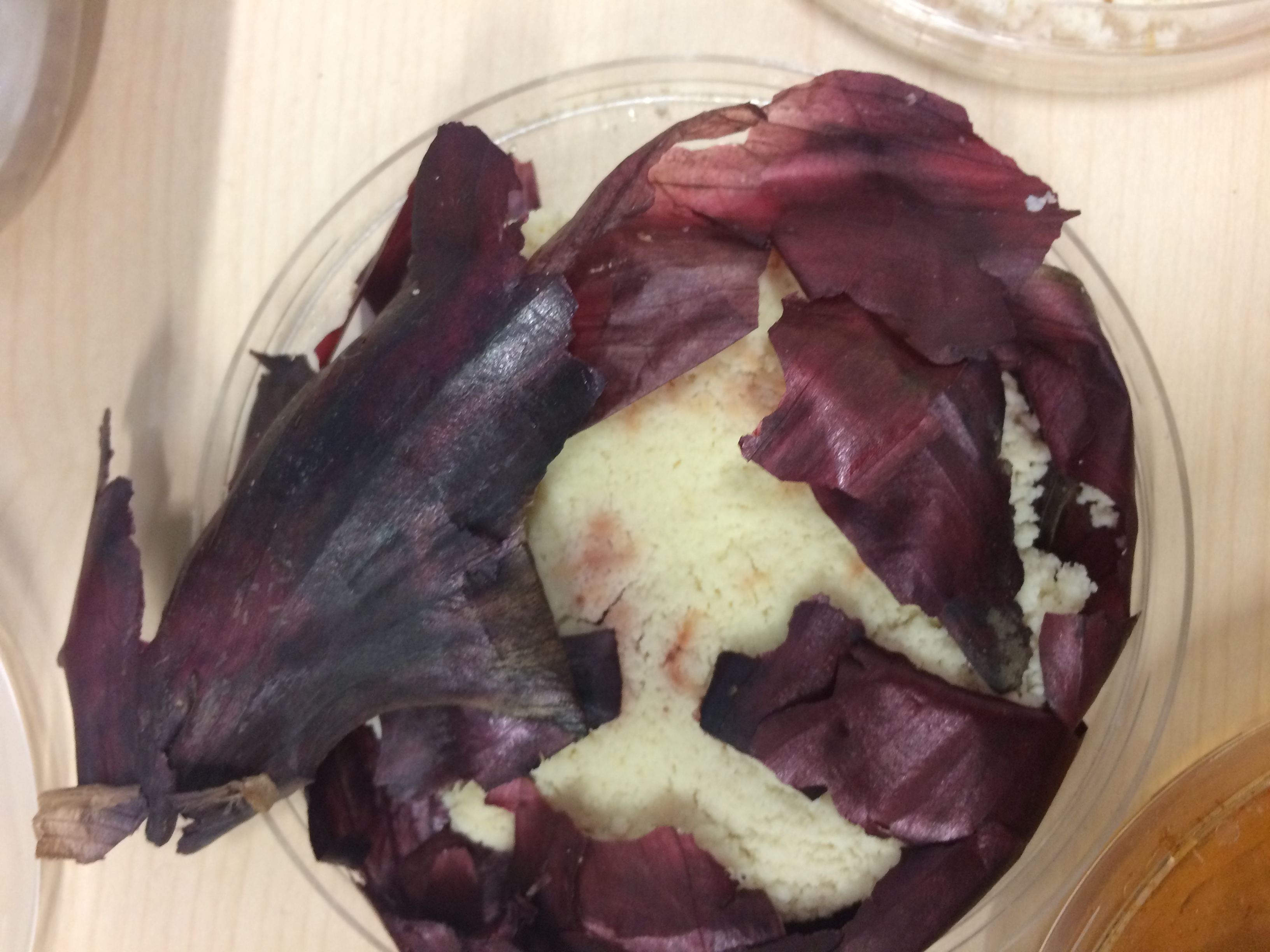
From left to right: control, with glycerol, paprika, curcuma, onion peel
The texture was the same in all of them: grainy, very brittle